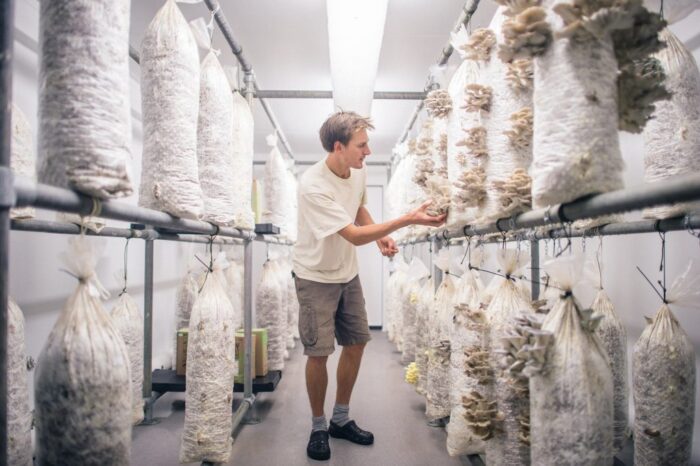
One of the most lucrative enterprises that can be started with small initial expenditure and in a limited amount of area is mushroom farming. However, if you want to expand this firm, you must be familiar with the appropriate strategies and tools.
By 2026, the global market for mushrooms, which was valued at 12.74 million tonnes in 2018, is expected to have grown to 20.84 million tonnes. The ability to grow a variety of mushrooms is the best aspect of the mushroom farming industry.
There is also an advantage of growing your own lions mane. The benefit of harvesting your mushrooms from your own garden.
Therefore, there is no market congestion. Have you already made up your mind to start a mushroom-growing business? So a business plan would be the first thing you would need. Check out the following 8 tips for making a mushroom farming business plan!

1. Business Analysis
Describe the kind of mushroom cultivation you plan to begin. You can choose an organic farm, a greenhouse, or an outdoor system. Mention your company’s founding date, motivation for starting, number of mushroom species grown, organizational structure, etc.
2. Industry Analysis
Describe the mushroom farm industry in this section. In this way, you will gain a better understanding of the mushroom farming sector. You can grasp the current trends by conducting an industry study. Having a thorough understanding of the business you are entering also helps you win over investors.
3. Target client base

The plan needs to identify the customer group you want to target. Wholesalers, grocers, supermarkets, eateries, and final customers are examples of different client categories. Your promotion techniques will be based on your choice of a consumer segment. The demographics, age, or income levels can all be used to determine your target market.
4. Analyze your rivals
Analyze the other companies that are operating in a similar business in detail. Learn about their farming methods, the kind of mushrooms they grow, their pricing policy, who their target market is, and most importantly, their capabilities and shortcomings.
5. Arrange your funds
The major funding sources for a mushroom farm include personal savings, credit cards, bank loans, and angel investors. The investors must, however, be convinced that your firm will yield good returns if you want a loan. Before investing in your business, banks or other investors will examine your business plan to determine whether your business is likely to grow.
6. Marketing strategy

A good marketing plan should outline the types of mushrooms you are growing, the prices you have set for them, and how and why they are different from those of your rivals. It should also outline your intended sales channels and any advertising tactics you plan to use. You can promote through television or radio, newspapers and magazines, handing out leaflets, or making your own website.
7. Build a powerful team
Any organization needs a capable management team. The same holds true for a mushroom farming business. Include team members who have expertise in mushroom farming. In the company plan, mention your team members’ successes, backgrounds, qualifications, and prior experiences.
8. Financial plan
Include the cash flow statement, profit and loss account, income statement, and balance sheet of your organization. Investors are always interested in a company’s financial plans since they provide an overview of the liquidity and profitability of the company.
Conclusion
It is clear that a mushroom farming company’s business plan is similar to that of other companies. When you finally create a complete, formal business plan, you have a better knowledge of the mushroom market, the mushroom industry, and your relative position in the market. You may better grasp what it takes to start and grow a successful mushroom farm by using a professional business plan.
Since creating a business plan is the first and most important step in starting your own mushroom farm, do not hesitate to consult our experts. Our team will be happy to assist you in preparing your dream business plan.








